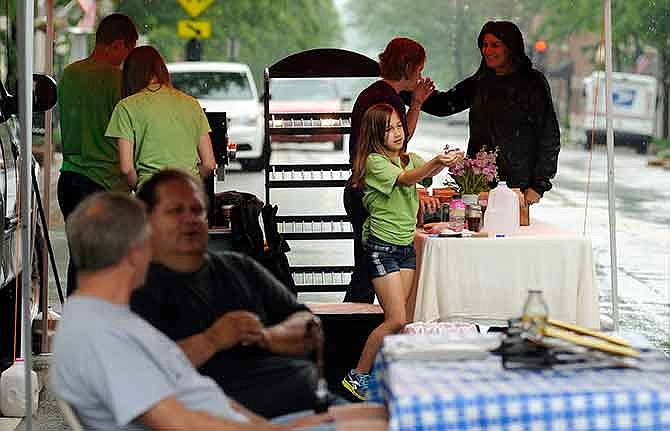A strengthened focus on producing and distributing foods locally is about to take root in Jefferson City.
Jefferson City is one of 26 communities nationwide - and the only one in Missouri - to be selected for the Local Foods, Local Places initiative, a combined effort of the U.S. Department of Agriculture, U.S. Environmental Protection Agency, U.S. Department of Transportation, the Appalachian Regional Commission, the Delta Regional Authority and the U.S. Centers for Disease Control and Prevention.
The Local Foods, Local Places program's goals are twofold: to improve access to fresh, healthy food that is locally produced and to revitalize business districts while boosting economic opportunities for local farmers and businesses, according to information from the EPA. The initiative has assembled a team of agricultural, transportation, environmental, public health and regional economic experts to work with participating communities to develop local food projects.
In Jefferson City, that project is the Lincoln University farmers market, which temporarily operated in the middle of downtown on Madison Street this past May while its regular Chestnut Street location was unavailable due to other LU events.
"It just worked very well. We loved having it downtown," said Stephanie Bell, president of the Downtown Association who submitted the application to Local Foods, Local Places. "Most of our businesses were very pleased with the extra traffic it brought to them downtown, and it also exposed the Lincoln farmers' market to more visibility than they had before."
The decision to apply for the program resulted mainly from downtown residents' feedback.
"Right now, one of the biggest issues we hear is there's not a grocery store in downtown. And if you're a resident, you can do a lot of things downtown without having a car. But the one thing they have to get in a car for is to get groceries," Bell said. "We heard a lot of feedback from our residents that they would like it if they could come down Saturday morning and get fresh food and take it back to their apartments, where normally they would have to get in their car and drive."
To start things off, Local Foods, Local Places will send a team of experts to Jefferson City early in 2015 to provide a workshop for community stakeholders - likely including representatives of the Lincoln University farmers market and Downtown Association as well as from Jefferson City and Cole County and other area farmers markets.
"One of the main things we're looking to do is learning about best practices from across the country," Bell said, "looking at other towns across the country that have successful farmers markets - what they've done and how we can capitalize on that."
She said the Downtown Association intends to bring the organizers of Jefferson City's other two farmers markets - the Cole County farmers market, which operates in the Kmart parking lot on Missouri Boulevard, and the Capital Region Medical Center farmers market across from the Sam B. Cook Healthplex on Southwest Boulevard - into the strategy as well.
"We hope that those people will also be at the table, and we can talk about what's working and what we can do to bring local foods to more people," she said. "The whole goal is not to consolidate necessarily into one market, but maybe to talk about timing and how we can increase opportunities for our farmers and increase opportunities for our citizens to get local food."
Potential ways to streamline their efforts could include arranging the three markets' schedules to complement one another and coordinating the promotion of all three, Bell continued.
The six federal agencies supporting the program have invested $650,000 all together; and while the portion of that amount that will make it to Jefferson City in grant money is unknown as of yet, the technical support the program will provide could lead to additional grants.
"They've got more information on possible available monies. They can point us in the right direction if we can get a good plan together and we know where we want to go," Bell said. "In other communities, they have been able to find some dollars here and there to do something. That might allow us to do a bigger-scale project."
She said she hopes developing the downtown farmers market will continue to increase benefits to downtown businesses as well as residents.
The primary goal is "to increase the number of vendors, and if vendors that are coming know that the audience is larger in downtown, then maybe they bring more than they typically would," Bell said. "If they can count on us to give them some visibility and get more people in front of them, they can increase their offerings."

